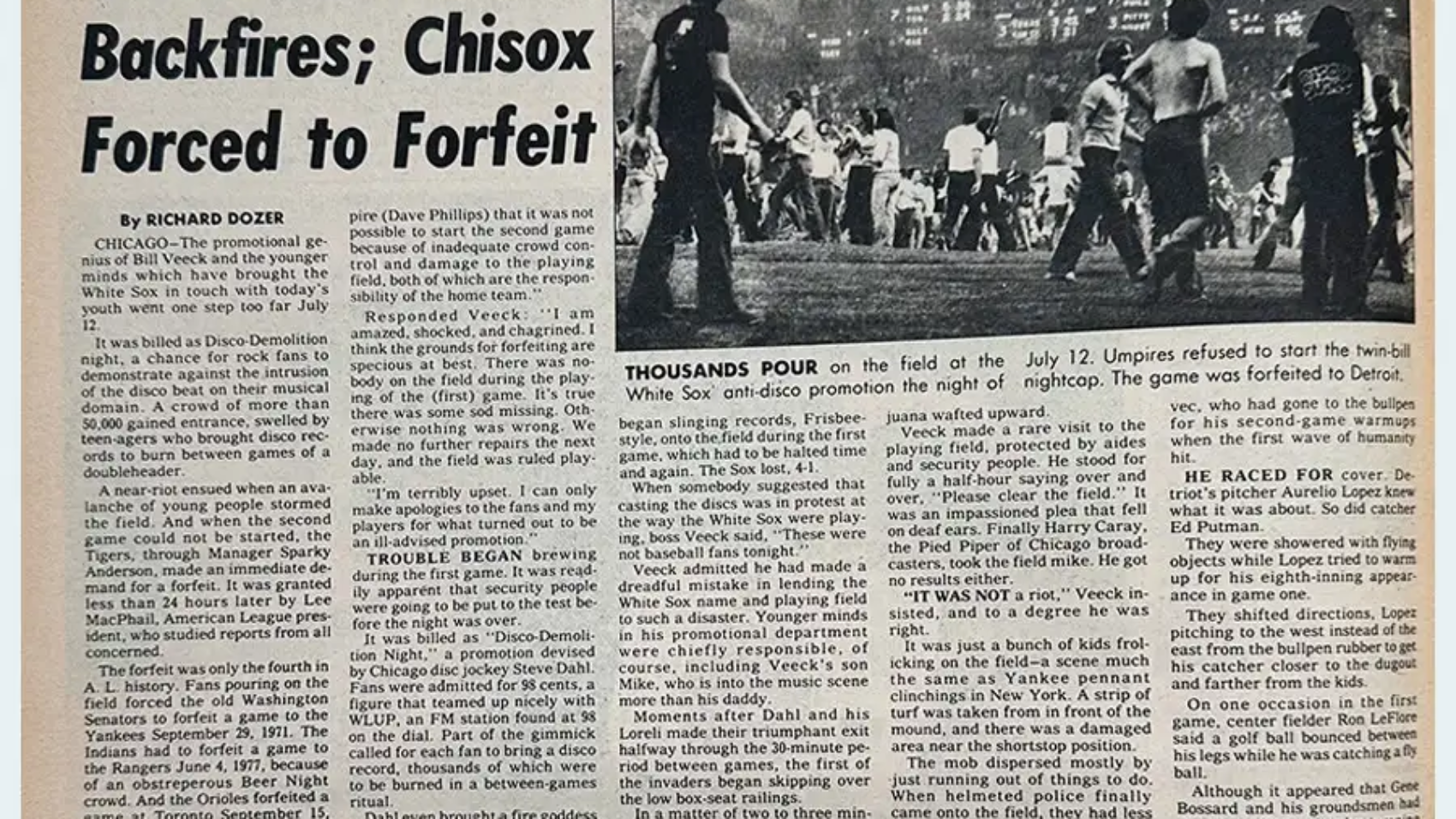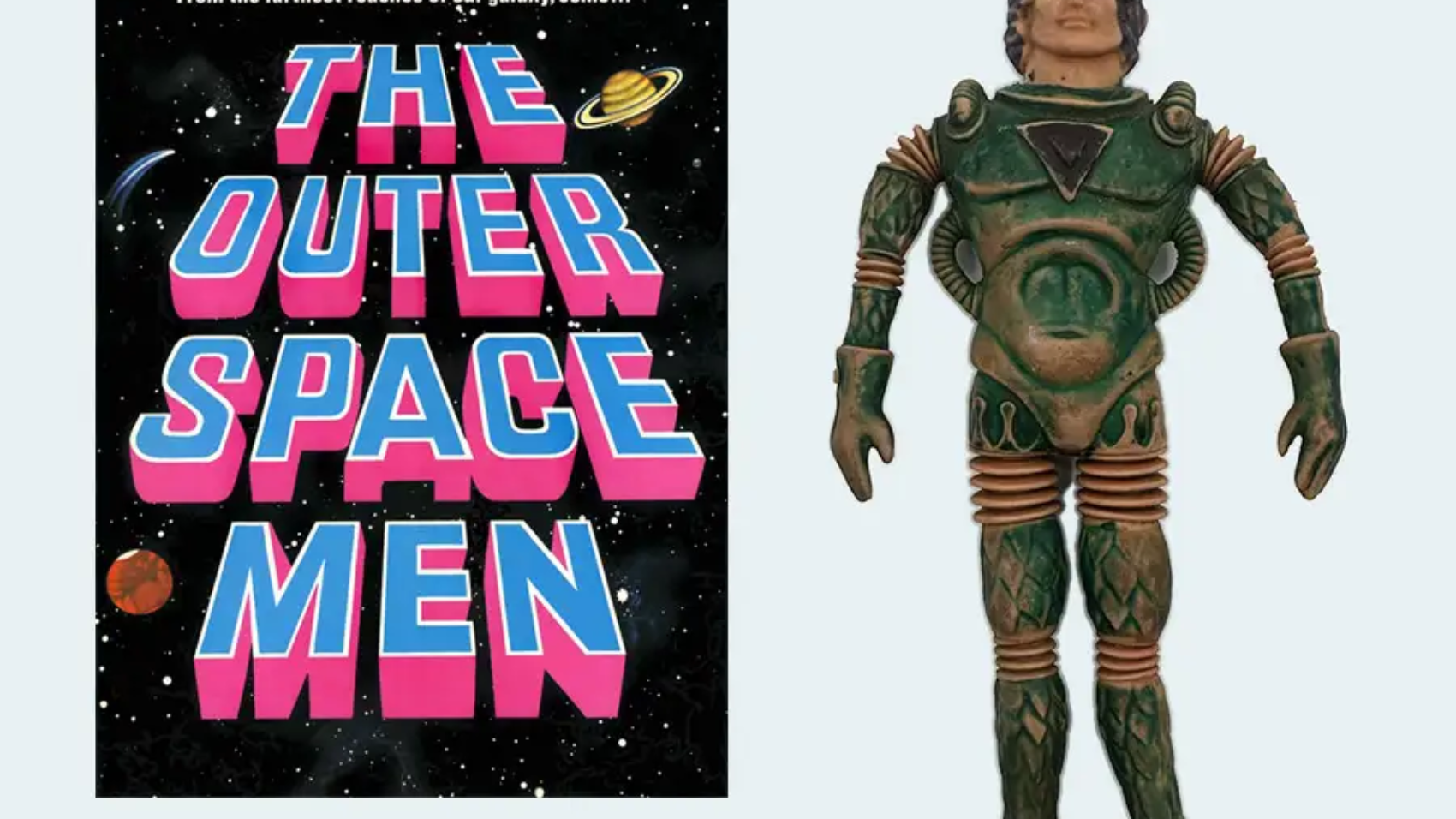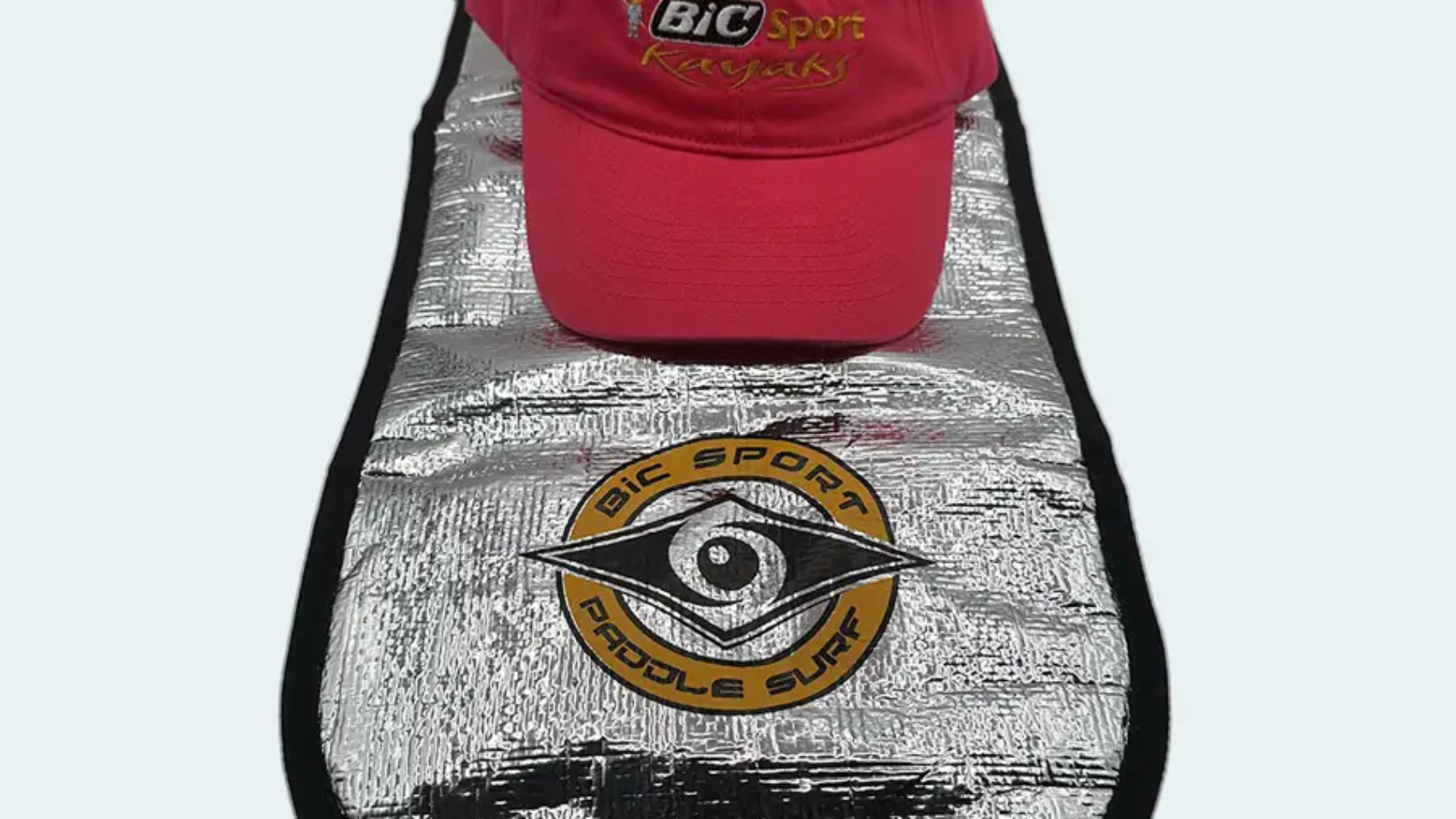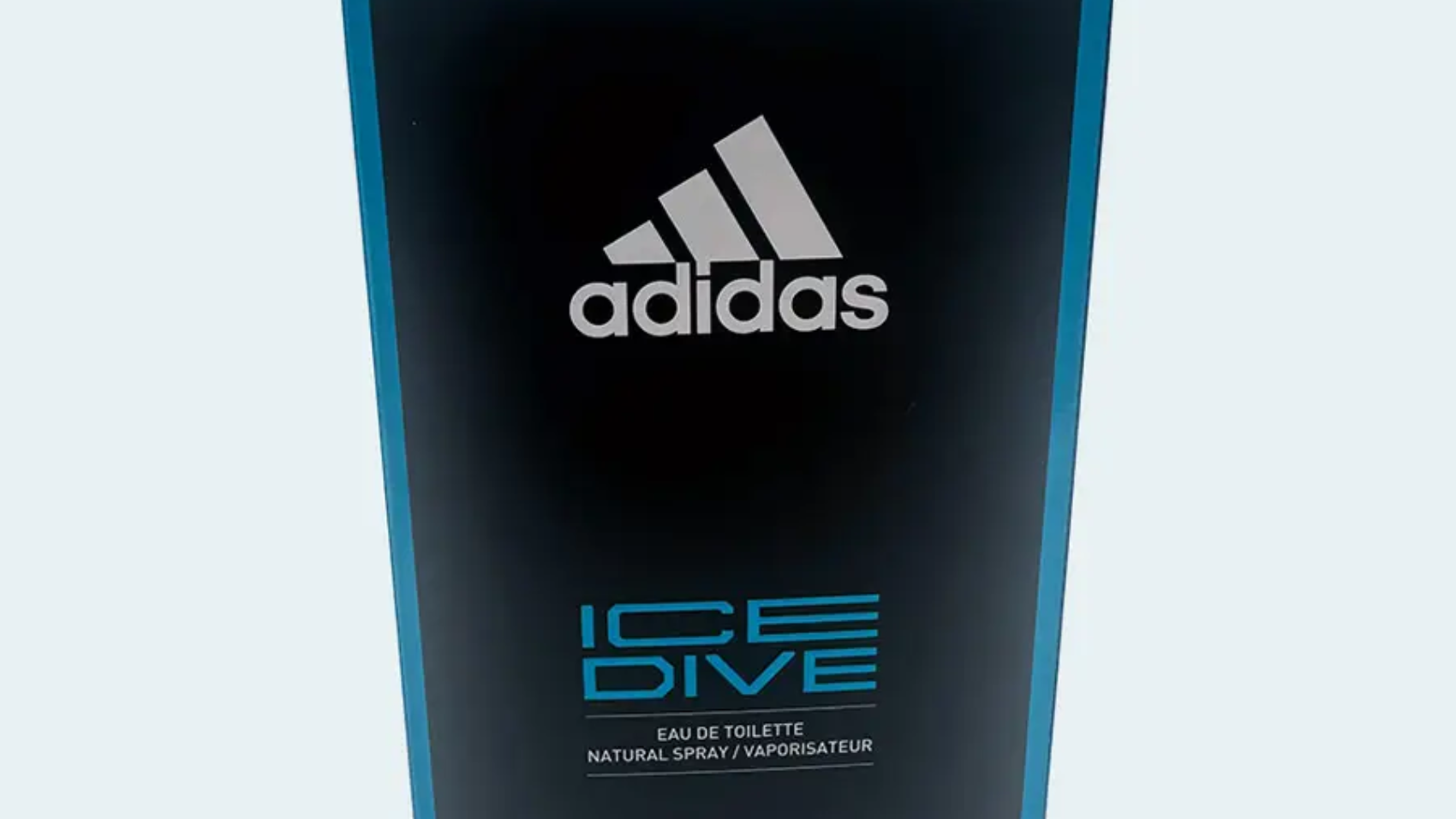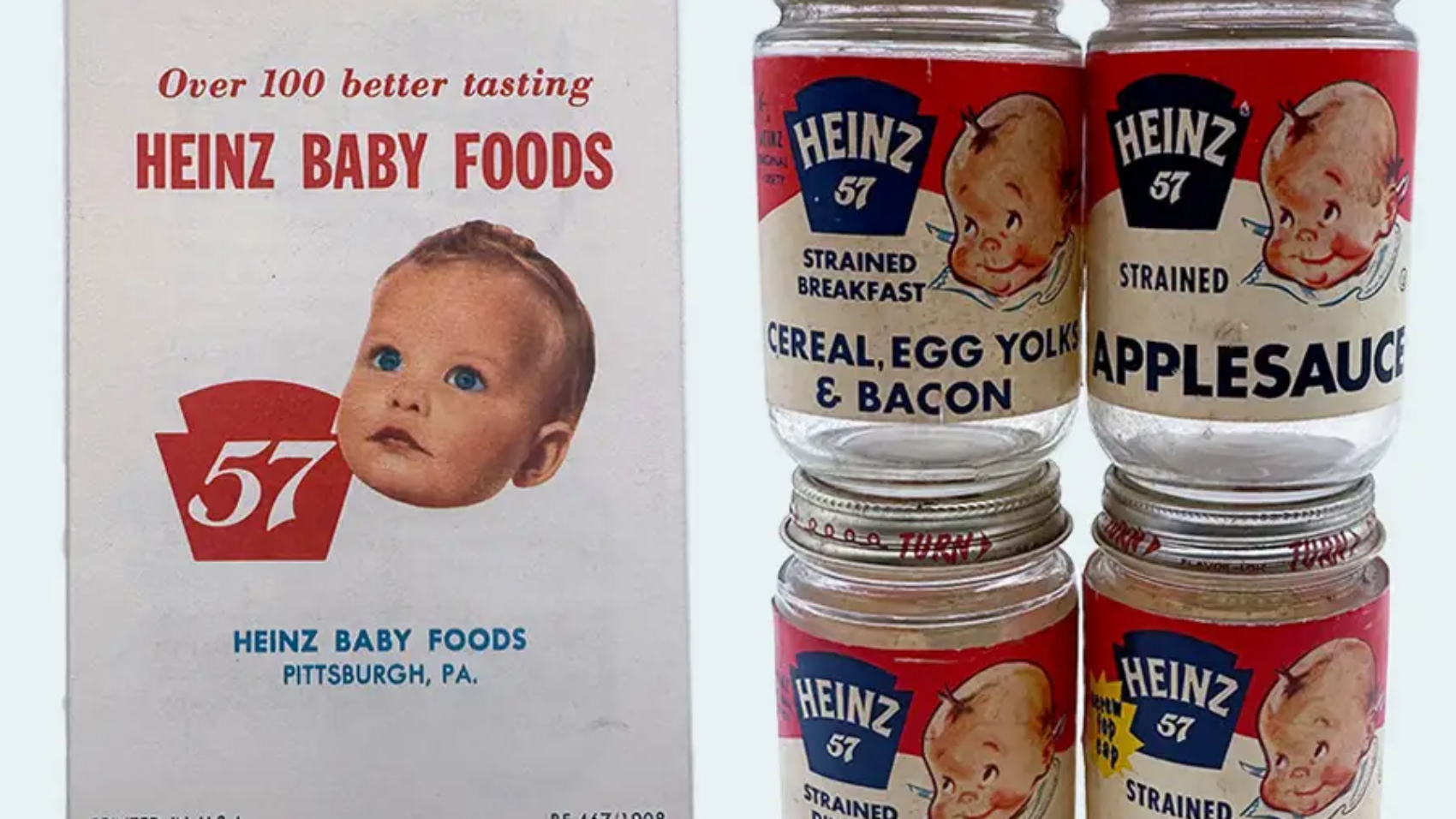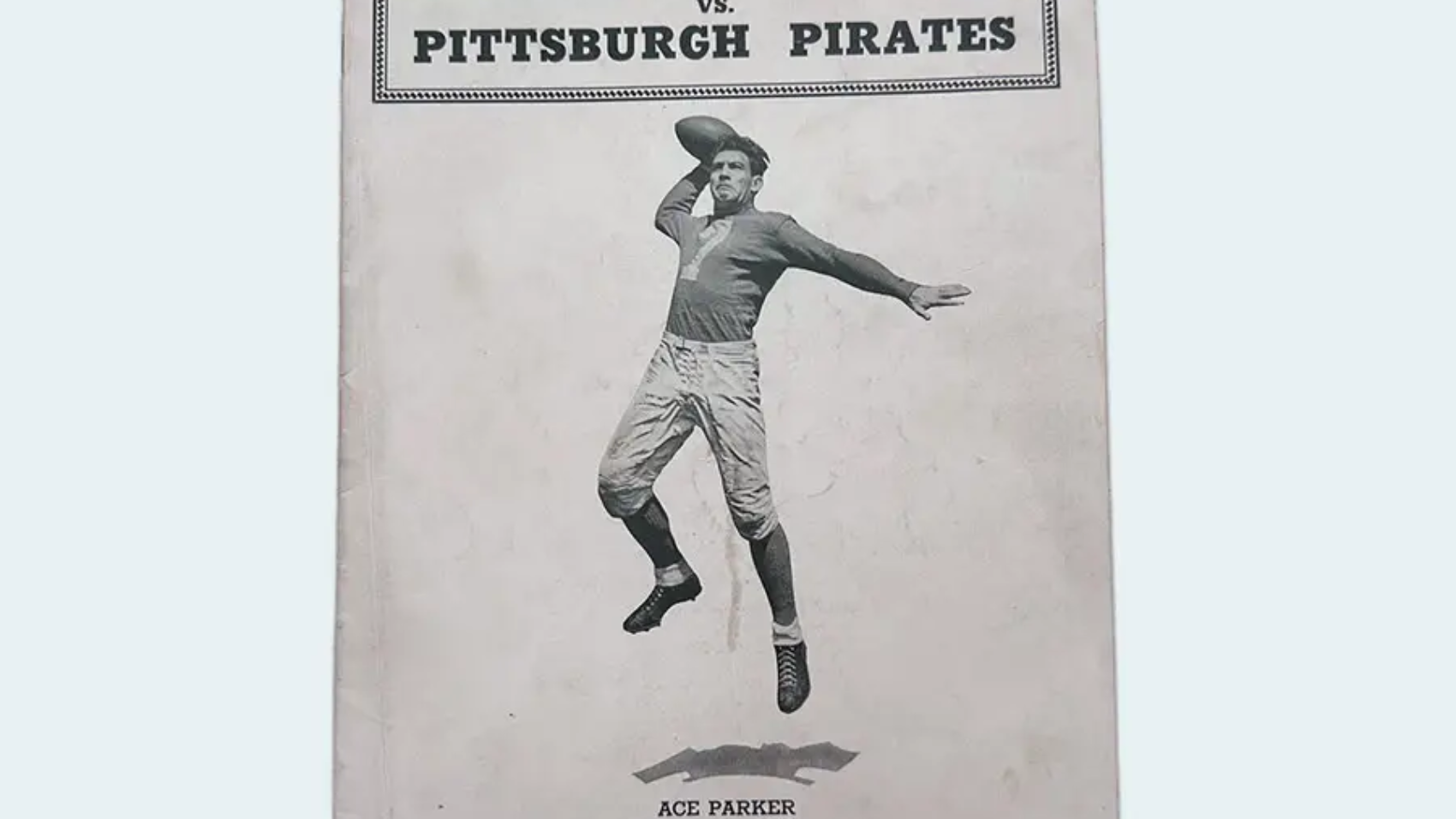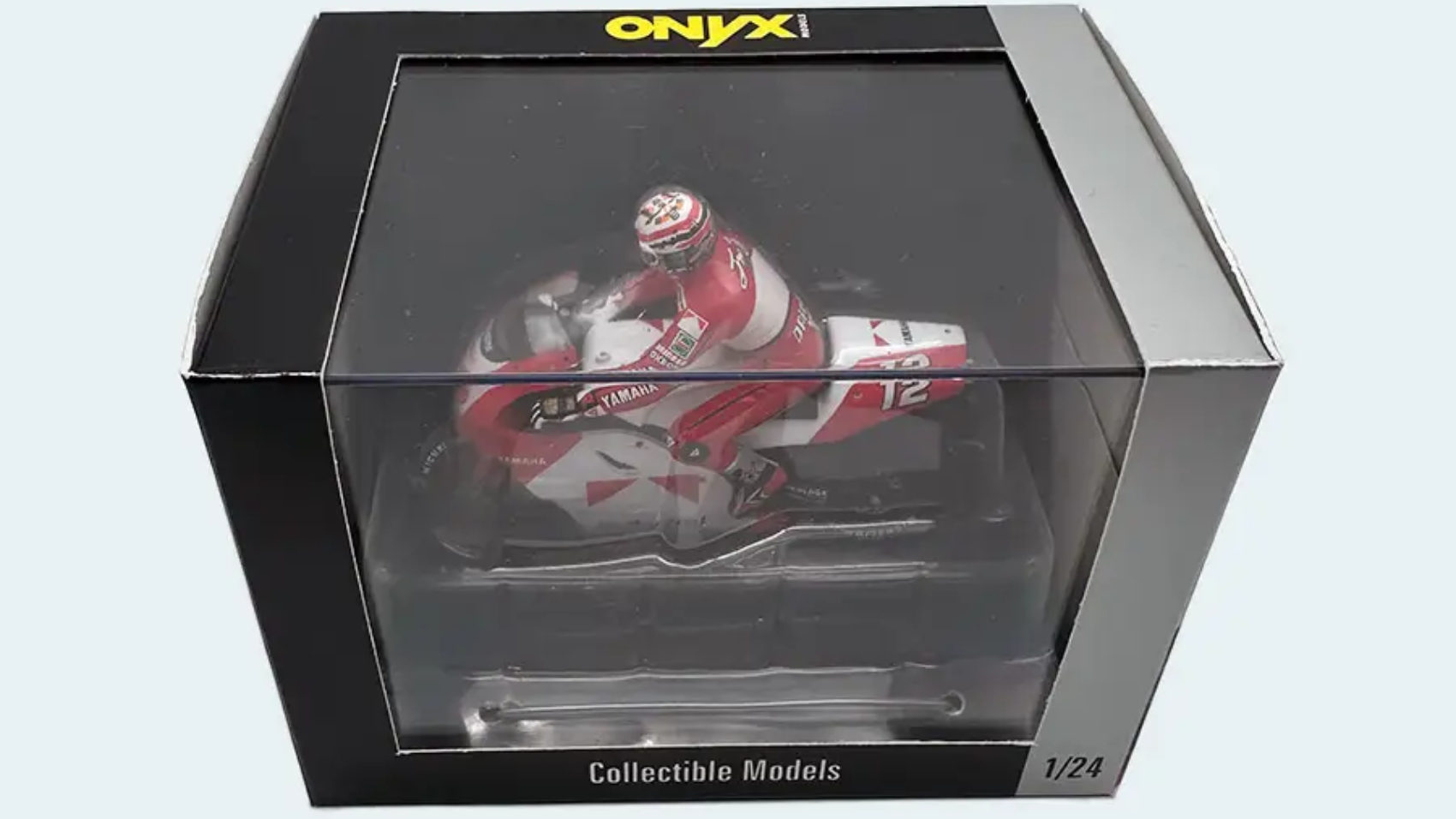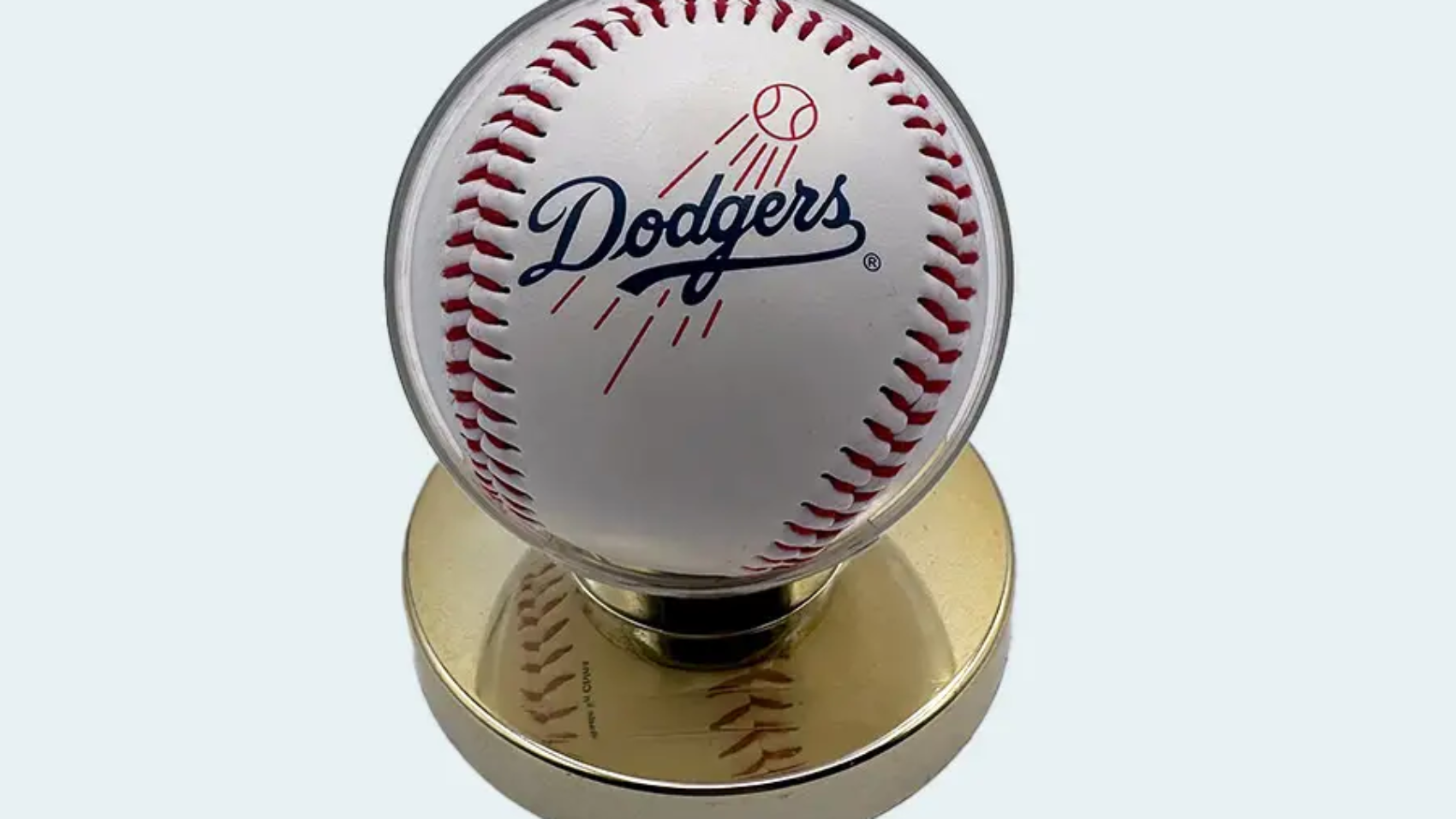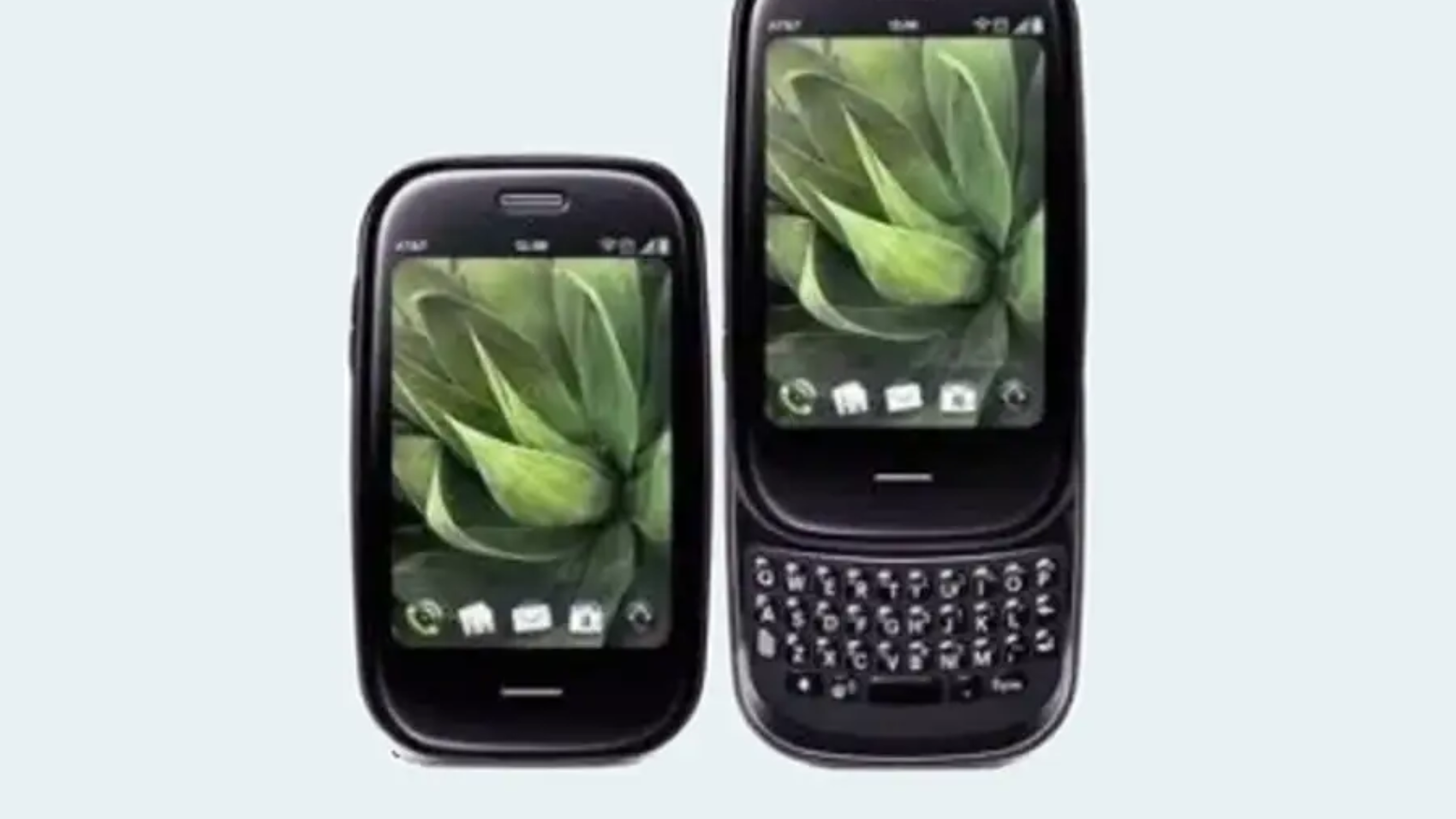Disco Demolition Night was a MLB promotion on Thursday, July 12, 1979, at Comiskey Park in Chicago, that ended in a riot. At the climax of the event, a crate filled with disco records was blown up on the field between games of the twi-night doubleheader between the Chicago White Sox and Detroit Tigers. Many had come to see the explosion rather than the games and rushed onto the field after the detonation. The playing field was so damaged by the explosion and by the rioters that the White Sox were required to forfeit the second game to the Tigers.
White Sox officials had hoped for a crowd of 20,000, about 5,000 more than usual. Instead, at least 50,000 packed the stadium, and thousands more continued to sneak in after capacity was reached and gates were closed. Many of the records were not collected by staff and were thrown like flying discs from the stands. After they blew up the collected records, thousands of fans stormed the field and remained there until dispersed by riot police.


